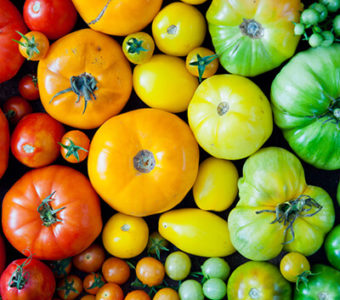Fiber is a vital component of a healthy diet, yet most people don’t get enough daily. The health benefits of fiber can include improved digestion and a reduced risk of chronic diseases. We have practical tips on how you can easily increase your fiber intake with delicious and nutritious foods.
“A report from the Dietary Guidelines for Americans suggests that only five percent of us are getting enough fiber,” says Susie Schneider, RD, LD, registered dietitian at OhioHealth. “Fiber has been named a nutrient of concern, but some small changes can get you where you need to be with your daily intake.”
Health benefits of fiber
When it comes to fiber and digestion, it’s well known that roughage can help you feel full for longer and boost regularity. However, the benefits of dietary fiber don’t stop there. It can also help lower your cholesterol, improve your heart health and may even prevent some types of cancer. This is largely because fiber helps you maintain a healthy weight by making you feel full for longer and it lowers your risk of diabetes by controlling your blood sugar.
Schneider explains that fiber comes in two basic forms: soluble and insoluble. Because they provide different benefits, it’s important to incorporate both forms into your daily diet.
Soluble fiber
This form of fiber dissolves in liquid and can help reduce your cholesterol. Soluble fiber forms a gel-like material as it passes through your digestive tract, which slows down your digestion and pulls cholesterol with it. Good sources of soluble fiber include most fruits and vegetables, lentils and grains including oats and barley.
Insoluble fiber
Unlike its counterpart, insoluble fiber does not dissolve in liquid. As a result, it can help prevent constipation and encourage regular bowel movements. Whole grains, wheat brans, nuts and beans, as well as some fruits and veggies, are good sources of insoluble fiber.
High-fiber foods and ideas
Schneider says that a well-rounded diet that includes whole grains as well as plenty of fruits and vegetables should help you get closer to your daily fiber intake goals.
Some examples of easy-to-find high-fiber foods include:
- Frozen edamame, shelled or in a pod
- Chickpeas
- Beans, such as pinto, black, kidney or refried
- Hummus
- Whole grain or chickpea pasta
- Whole grain cereals, such as bran or oat
- Whole grain bread or wraps, such as whole wheat or rye
- Whole grain crackers
- Seeds, including chia and ground flax
- Nuts such as almonds, walnuts or pecans
A few simple swaps or additions to your favorite meals can boost your fiber intake. Some of Schneider’s favorite suggestions include:
- Add edamame to a stir fry
- Toss a handful of chickpeas onto a salad or into a soup
- Swap out mayo for a swipe of hummus on a sandwich
- Finely chop mushrooms or peppers to cook with your scrambled eggs
- Blend some spinach, diced zucchini or chia seeds into a smoothie
- Layer refried beans inside a quesadilla made with a whole wheat wrap
- Sprinkle whole grain cereal and berries into Greek-style yogurt
How to increase fiber intake
The daily fiber recommendations for people younger than 50 are 38 grams per day for men and 25 grams per day for women. For people who want to track their fiber intake, Schneider suggests keeping a food journal or using an app for a couple of weeks. Signs you might need to increase your fiber intake include constipation and not feeling full after eating meals.
While there is no upper limit for how much fiber you should eat, it’s best to start slowly if you aren’t used to a high-fiber diet. Adding three to five grams of fiber each day can help prevent gastrointestinal discomfort such as gas, bloating, diarrhea and cramping. Schneider says that drinking plenty of water can also offset any bothersome symptoms.
Fiber supplements are available and can be helpful, especially for people with food allergies or a poor appetite. However, Schneider urges her patients to focus on fiber-rich meals and food first.
“When you get your fiber from a supplement you miss out on plant-based nutrients,” she says. “Antioxidants and phytonutrients are important, and you can’t get all that in a supplement.”
Looking for new recipes to add to your healthy rotation? Check out our favorites here.





